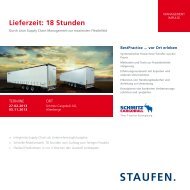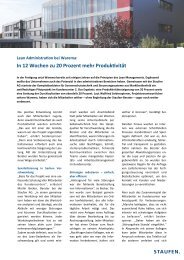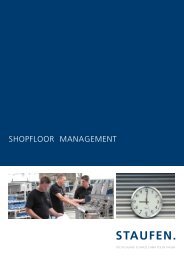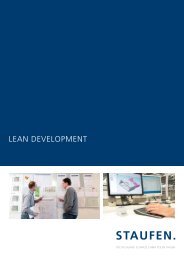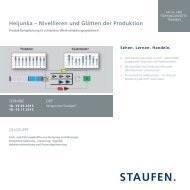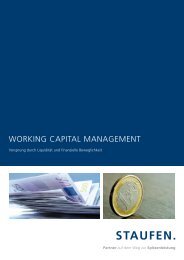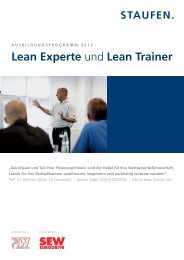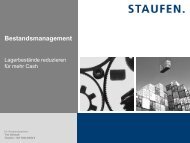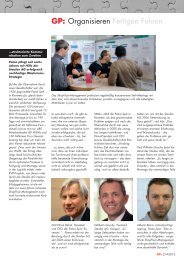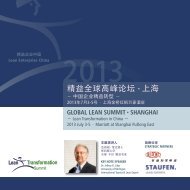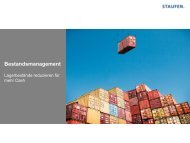Brochure Lean Development - Staufen
Brochure Lean Development - Staufen
Brochure Lean Development - Staufen
You also want an ePaper? Increase the reach of your titles
YUMPU automatically turns print PDFs into web optimized ePapers that Google loves.
Focussing on the essential.<br />
LEADERS IN INNOVATION AND PERFORMANCE DEVELOP LEANER<br />
companies AND GET their products TO THE MARKET QUICKER.<br />
<strong>Lean</strong> <strong>Development</strong> reduces lead times in the product creation process through the elimination<br />
of waste. A <strong>Lean</strong> <strong>Development</strong> System uses lean principles, based on organisational and operational<br />
methods with the aim of takt-timing development projects efficiently and securing their<br />
results.<br />
These days, complex products are the result of complex development<br />
processes. Competition and market conditions condense<br />
the life cycles of products as well as the ‘time-to-money’.<br />
These challenges cannot be mastered by troubleshooting - the<br />
demands made on modern development organizations have<br />
undergone a fundamental change. At the same time, innovation<br />
and product development represent the most effective<br />
levers for securing lasting corporate success. Minimizing waste<br />
coupled with flexibility and breathability of the development<br />
organization are the starting points whole productivity potentials<br />
can be unlocked to good effect.<br />
The logic of a lean production system can lead to the coherent<br />
development of a product creation process based on minimized<br />
lead times.<br />
1. Absence of faults = robust processes thanks to the widespread<br />
use of standards, FMEA together with immediate clarification in<br />
case of fault and problems during the early stages of a project<br />
2. Flow = continuous communication of development results from<br />
initial customer specifications to the start of series production<br />
3. Rhythm = takt-timing of projects and work packages by project<br />
clarification prior to project start, stringent project control and<br />
short-cycle regular communication<br />
4. Pull = pull principle at the interfaces - information and decisionmaking<br />
is called in by the next downstream processors as required<br />
Transparency and focus instead of authorization to read and a<br />
flood of information<br />
Mentor-mentee dialogue instead of hierarchy and micromanagement<br />
Frontloading instead of resource overloading<br />
Value-stream orientation instead of functional thinking



